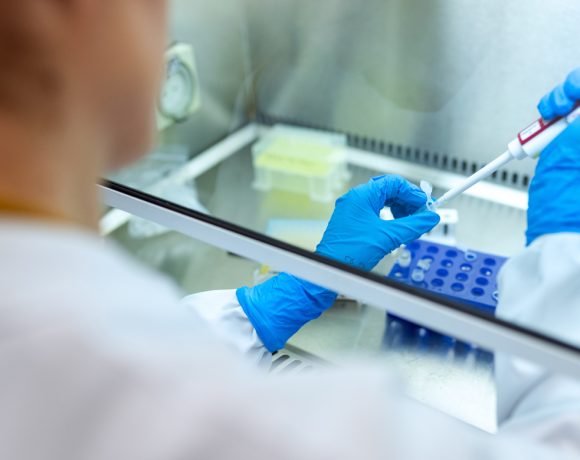- India now has strong biotech & health sciences clusters championed by biotech parks, industry, CROs, hospitals and research institutions. Its hospitals and research institutions have built up the enabling ecosystem by driving innovation and boosting scale and commercial success in the form of innovation centres and accelerators.
- The Government of India, through its various departments, is setting up competence centres and facilities in cutting-edge subjects like artificial intelligence, energy & mobility, nanotechnology, biotechnology.
- The best way to navigate in the vast Indian research ecosystem is via your existing network. You might have had a past collaborator, who might not fit the current project focus, but can be your guide to connect you to the right research groups in the country or advise you on your shortlisted groups.
The Indo-Swiss Joint Research Programme (ISJRP), initiated by the Indian and Swiss governments in 2005, has announced the 2020 call to support research and development projects that advance the implementation of Systems Medicine approaches, in both clinical research and medical practice. It is quite a shift from the past broad thematic calls of ISJRP and complements the needs of the fast growing innovation ecosystem of both countries.
swissnex India’s recent report on the ‘Emerging Models of Collaborations with Indian Higher Education Institutions’ provides an overview on accessing Indian innovation ecosystem through institutional partnerships and research collaborations.
India now has strong biotech & health sciences clusters championed by biotech parks, industry, CROs, hospitals and research institutions. While the country’s biotech parks and contract research organisations (CROs) have received much global attention, its hospitals and research institutions have built up the enabling ecosystem by driving innovation and boosting scale and commercial success in the form of innovation centres and accelerators. Autonomous institutes under Department of Biotechnology, Govt. of India, Medical Research Institutes of National Importance and institutes under Indian Council of Medical Research are examples of such initiatives. The current ISJRP call enables Swiss counterparts to collaborate with Indian hospitals and research institutions driving the applied and basic research in Life Sciences.
Collaboration in new frontiers: Over the last 15 years, many of the Indian premier universities and institutions have built strategic relations with one or more Swiss universities and its affiliated institutions. The Indo-Swiss bilateral Joint Research Programme (ISJRP) and the Swiss National Science Foundation (SNSF) projects with international partners have definitely helped to build long-lasting research partnerships between Indian and Swiss institutions.
The Government of India, through its various departments, is setting up competence centres and facilities in cutting-edge subjects like artificial intelligence, energy & mobility, nanotechnology, biotechnology as well as interdisciplinary subjects like climate change, health sciences, agritech and digital learning. Strategic international partnerships in these domains are important for leading Indian institutions.
5-step approach for research collaboration
Swiss academic stakeholders looking to build successful research partnerships with Indian institutions can adopt this 5 step approach –
1. Motivation: Define your internal objectives on why you need to collaborate. International collaborations are not for getting work done in a shorter time or cheaply – it can rather be the opposite. Review the draft proposal to determine the cost/benefits for both parties. Make an analysis to see if it would match expectations of your potential Indian partner
2. Finding a right partner: If research collaborations are in focus, it’s good to check if the shortlisted research group has complimentary expertise needed for the project, whether the institution is eligible to participate as per the guidelines of the Indian Government for the bilateral call, does the institution conducts its research programs under any competence centre. Recently published lists of the full or associate/ assistant professors of respective departments/ centres are added indicators.
3. Leveraging your existing network: The best way to navigate in the vast Indian research ecosystem is via your existing network. You might have had a past collaborator, who might not fit the current project focus, but can be your guide to connect you to the right research groups in the country or advise you on your shortlisted groups.
4. Defining the collaboration terms: When you have identified your potential collaborator/s, it is important to define the collaboration terms upfront, especially how will you work together, who will do what, who are the coordinators for the project, what deliverables are expected from each side with a timeline. It does not mean everything is written in stone and can not be changed, but definitely gives clarity on the roles and responsibilities to each party.
5. Measuring, monitoring and communicating success: International collaboration needs time investment in nurturing relationships as it provides scientific exposure and intercultural competence; thus it is important to keep a successful collaboration ongoing with additional funding. It is thus important to measure and monitor the progress, encourage young collaborators from both sides and most importantly communicate the success of the project. Traditionally, the list of publications, scientific conferences have been the avenues, but nowadays social media act as an important tool to communicate scientific successes to your sponsors, funders and other stakeholders.
A classic example of a recent Swiss – Indian institutional partnership in life sciences research is between the University of Basel and Centre for Cellular and Molecular Platforms (C-CAMP) a renowned life sciences enabling platform, as well as with WeHub, a state run platform by the Government of Telangana for women entrepreneurs, in 2020.
University of Basel’s collaboration with C-Camp focuses on deep science and deeptech innovations with societal impact in both countries. It will act as a soft landing pad for Indian startups venturing into the biotech domain in Switzerland and vice versa, opening up access to incubation facilities, cutting-edge technologies and key players in the domain. Similarly, the partnership with Women Entrepreneurs (We)Hub will facilitate exchange programs for Swiss and Indian women entrepreneurs in healthcare, pharma, life sciences and technology sectors.
As Indian universities are increasingly focusing on moving ahead in international ranking and building quality partnerships, there has never been a better time for Switzerland and India to come together for research collaborations and innovation exchange. Added to that is the fact that Swiss and Indian cities such as Basel, Bangalore and Hyderabad are hotbeds of healthtech and life sciences innovation. Strategic partnerships between key institutions and entrepreneurs from the two countries have the potential to deliver significant outcomes with long term societal impact.






NO COMMENT